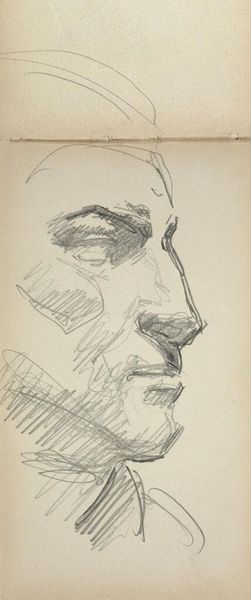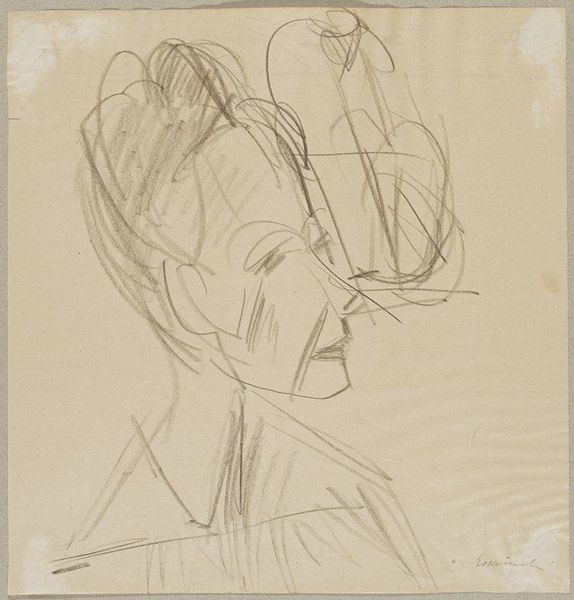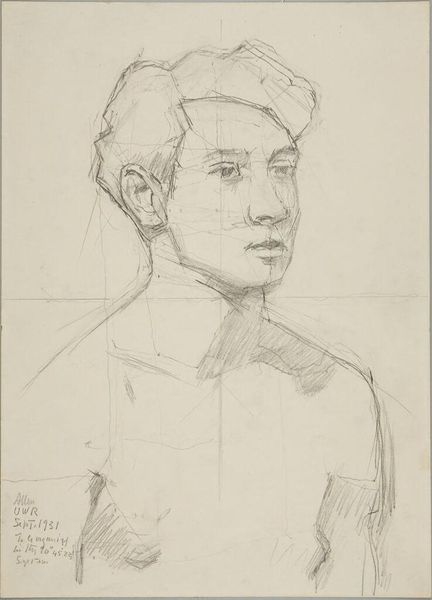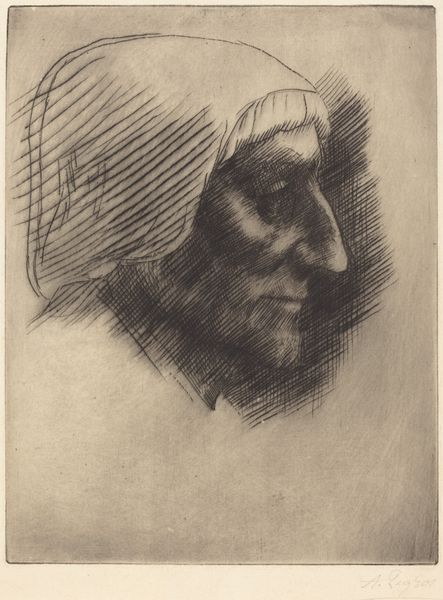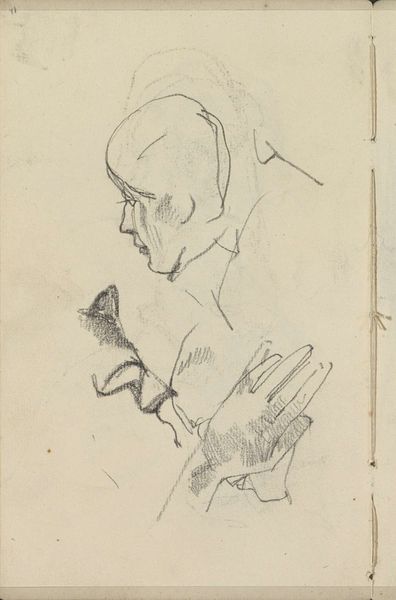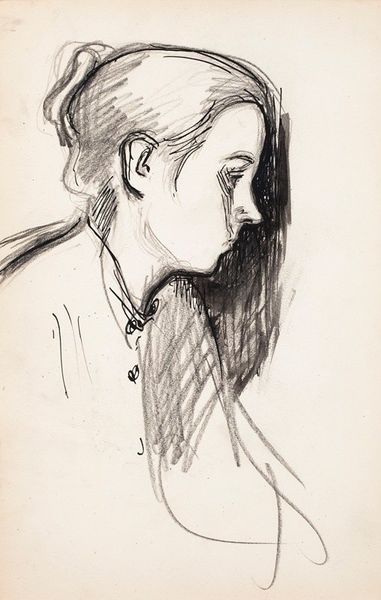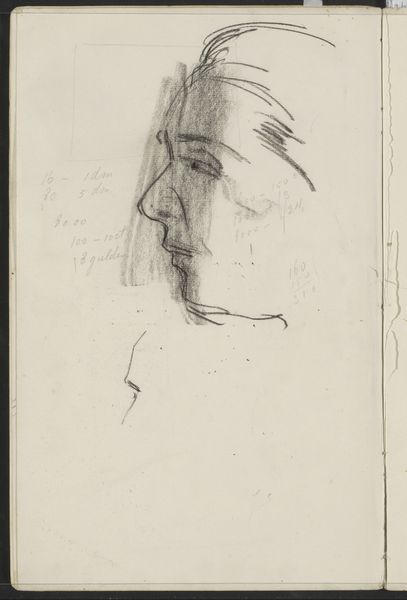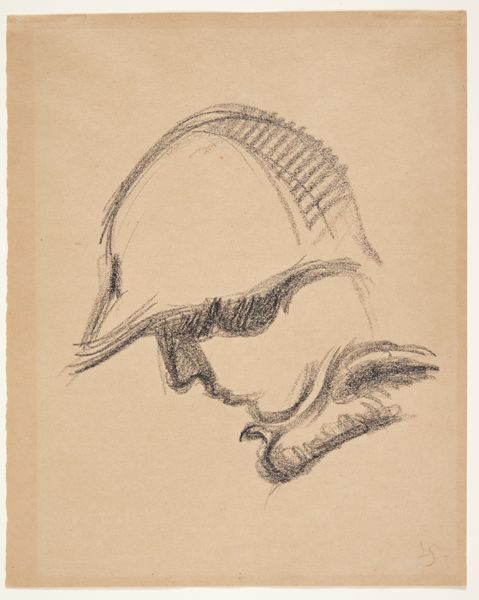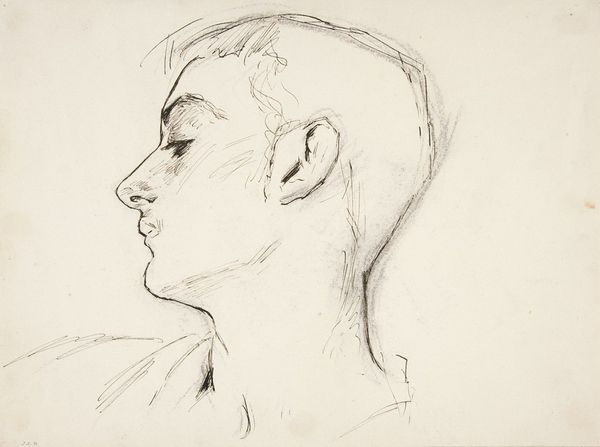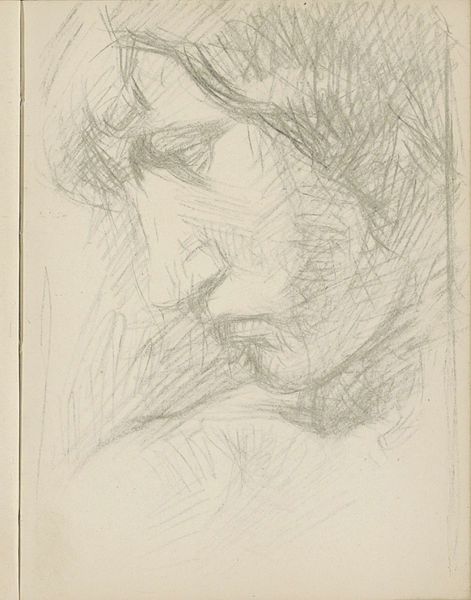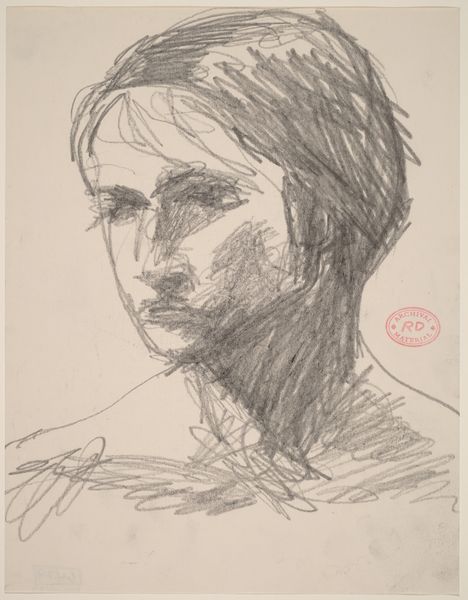
Copyright: Public Domain: Artvee
Magnus Enckell created this head study of a woman with brown ink and pencil. The subject’s gaze is directed inward, a classical motif that invites introspection and contemplation. The averted gaze is a common gesture that stretches back to antiquity. It is found in classical sculptures and Renaissance paintings, often used to denote modesty or deep thought. Think of Botticelli’s Venus, her eyes cast down, or even the many depictions of the Madonna in prayer. This inward focus resonates with the Symbolist movement of Enckell’s time, which rejected external reality in favor of exploring the inner, psychological landscape. The downcast eyes might also suggest melancholy, a state that has captivated artists for centuries. We see it echoed in Edvard Munch's tormented figures. These shared artistic expressions reveal our collective, subconscious desire to grapple with the profound depths of the human experience, from ancient sculptures to modern sketches. The act of turning away from the viewer and towards oneself suggests a cyclical, eternal quest for inner understanding, a quest that continues to resonate in contemporary art.
Comments
No comments
Be the first to comment and join the conversation on the ultimate creative platform.

